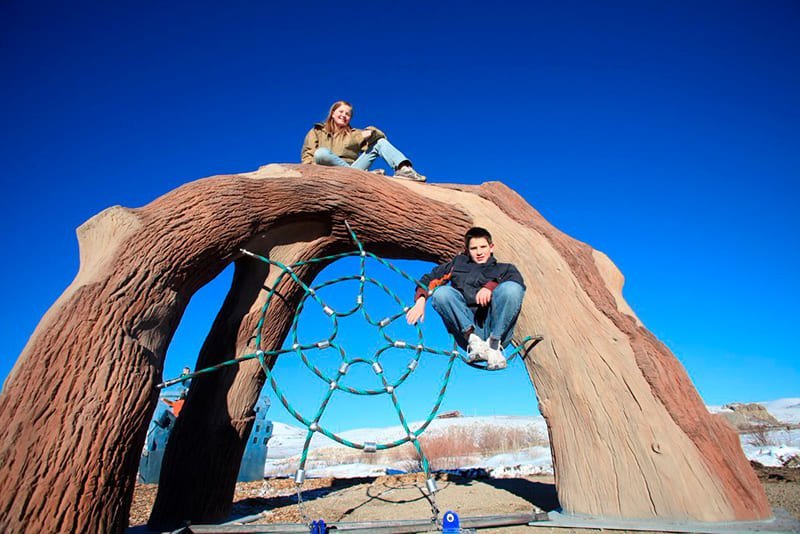Active play and physical development are fundamental aspects of children’s growth and development, and one popular way to encourage physical activity is to include climbing elements in playgrounds. However, the question arises about whether rope structures or play boulders are better for children to learn to climb. In this article, emphasis will be placed on the features and benefits of each option to help make an informed decision about which is the best option for children to learn to climb on playgrounds.
Rope structures
Rope structures are a popular option at many playgrounds. These structures consist of interlocking ropes and hanging ladders that allow children to climb and explore vertically. Among the benefits that rope structures offer children is that they help develop both fine and gross motor skills because climbing requires coordination, balance, and strength, which contributes to children’s physical development. It also stimulates balance and coordination because as they move along the ropes and steps, they learn to control their bodies and move safely and efficiently.
Additionally, they also offer a confidence and self-esteem boost because as children overcome different challenges while climbing a rope structure, they develop confidence in their abilities, which makes them feel self-assured.
Play boulders
Play boulders are another option for climbing systems in playgrounds. These artificial boulders are designed to simulate the natural features and textures of real boulders. Some advantages of play boulders are that they stimulate imagination and creativity by providing a platform for making up imaginary games and scenarios while climbing and exploring different rock formations. They can also develop climbing skills since, like rope structures, play boulders promote the development of motor skills and the strengthening of strength and balance. Children can learn to choose climbing routes, overcome obstacles, and find safe holds.
In addition, they stimulate tactile and natural sensation because play boulders are designed to provide an experience as close to reality as possible. Children can experience different textures and shapes that mimic the sensation of climbing natural boulders outdoors.
Knowing the differences
In the case of rope structures, they are systems that, despite being correctly fixed to a frame, can give a greater sense of instability, as they are made with ropes that hang and suspend. At the same time, play boulders simulate rocks and, therefore, convey a greater sense of robustness and solidity.
However, both elements are highly safe and firm for children to climb without inconvenience. Some rope structures can include elements that move or rotate on an axis, which gives them additional functionality, while play boulders are generally static pieces. Play boulders and rope structures can be combined to form larger play systems.
The selection
Both rope structures and play boulders have significant benefits for children’s learning to climb. When selecting an option, factors such as available space, target age group, and individual preferences should be considered. By combining both options, we can provide children with various climbing experiences that promote their physical development and provide fun and excitement.
What did you think of this topic? Do you want to know more about rope structures or play boulders for playgrounds?
If you want a rope structure or a play boulder in a playground for your project, community, school, daycare, or public park, contact us by visiting the following link.
